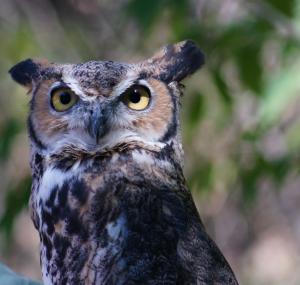
Hoo Hoo!
The nighttime hoot
Sounds out from the forest,
A familiar owl sound that says,
"Hello".
But OH,
That haunting sound,
To creatures on the ground,
Sends a message that makes them say,
"Oh No!"
Beware,
Owl's laser stare,
That pierces darkest air
Can make the hunted everywhere
Despair.
Its wings,
Unleashed in flight,
So silent in deep night,
Spells danger to unwary souls.
Poor things!
To us,
Hoots are soothing,
Eloquent and moving.
Be glad when owl is focused on --
Not you.
Hoo Hoo,
That haunting sound
That pierces darkest air
Spells danger to unwary souls.
Not you.
|
Author Notes
I often find the night sound of an Owl hooting to be soothing. Like the sound of the Loon, hearing it brings me a conjunction with nature, a familiar night sound that says the woods are alive with life. But, have you ever considered what that sound might mean to the little creatues of the woods, who are out and about at night? That is the inspiration for this poem.
This poem is a Garland Cinquain.
A Cinquain is a five line poem. The format, inspired by Adelaide Crapsey in 1915, has a fixed syllable count of: 2,4,6,8,2. Rhyming is optional.
A Garland Cinquain is a sequence of 5 Cinquains making stanzas, followed by a sixth Cinquain made up of fixed segments from the previous stanzas, typically line one from stanza one, line two from stanza two, and so on. So, if I represent the five lines 1,2,3,4,and 5 as a,b,c,d,e, and use capitals to show the repeated lines, the sequence would look like this:
Abcde aBcde abCde abcDe abcdE ABCDE.
So, the lines intertwine like garland and give an effect like other repeating poems.
For this poem I chose to use a mixture of rhying combinations and non-rhyme, just because I wanted to.
This photograph was taken by the author himself at Fort Snelling State Park along the Mississippi River bottoms in September, 2012.
|
|
